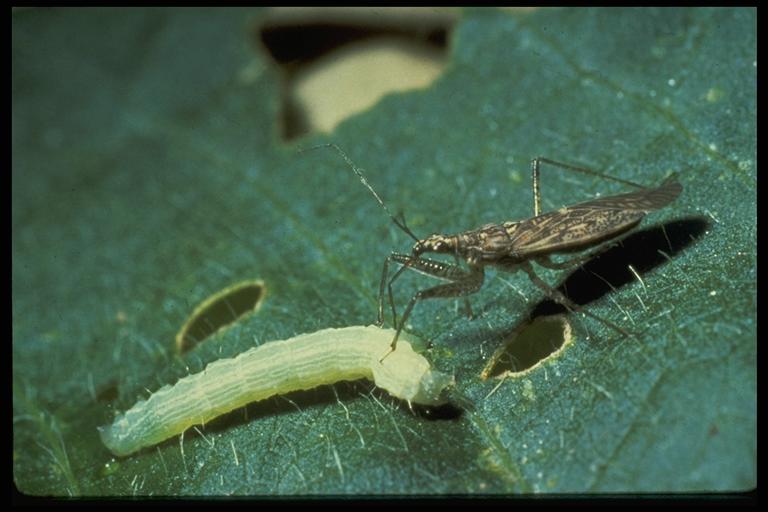
A damsel bug, Nabis sp. (Hemiptera: Nabidae). Photo by W. Sterling.
Common Name: Damsel bug
Scientific Name: Nabis sp.
Order: Hemiptera
Description: Adult damsel bugs are 3/8 to 1/2-inch long, tan to reddish brown and slender, with the body tapering toward the head. Nymphal stages are similar but lack fully developed wings. Legs are relatively long with the front pair enlarged slightly to capture prey. The head bears long four-segmented antennae and a four-segmented beak (rostrum). The beak is held underneath the body when at rest but is capable of being extended to pierce prey.
Life Cycle: Adult damsel bugs spend the winter in groundcover and winter crops such as winter grain and alfalfa. Eggs are inserted into plant tissue by females. Nymphs hatching from eggs develop through five stages (instars) in about 50 days. They are most abundant from mid-June through mid-August.
Habitat and Food Source(s): Damsel bugs are abundant in gardens, orchards and field crops such as cotton and soybeans, where they feed on caterpillar eggs, small larvae, aphids, fleahoppers, lygus bugs, leafhoppers, treehoppers and spider mites. They will also prey on other beneficial insects such as minute pirate bugs and big-eyed bugs. Although they will also feed on some plants, they cause no damage.
Pest Status: Species of damsel bugs, including the pale damsel bug, Nabis capsiformis Germar, are beneficial insects because they feed on a variety of arthropod pests; capable of biting but generally medically harmless.
Management: None, this is a beneficial insect.
For additional information, contact your local Texas A&M AgriLife Extension Service agent or search for other state Extension offices.
Literature: Bohmfalk et al. 1982; Irwin and Shepard 1980.